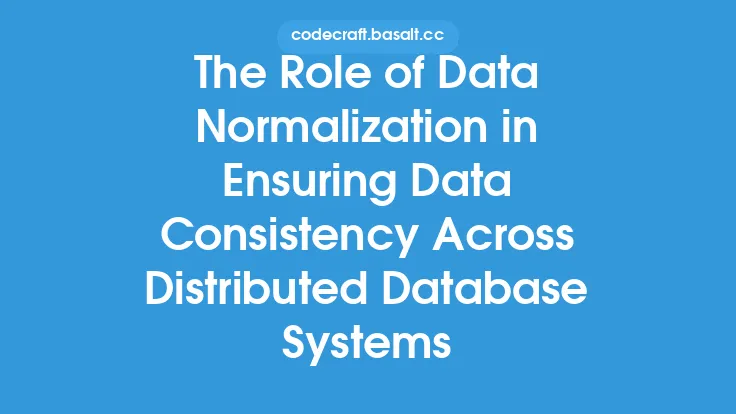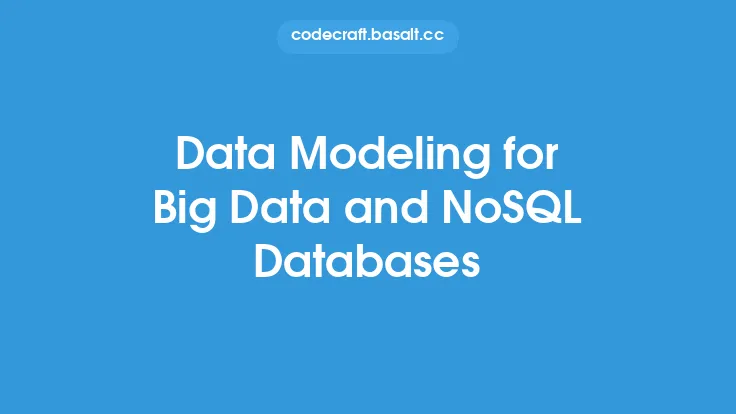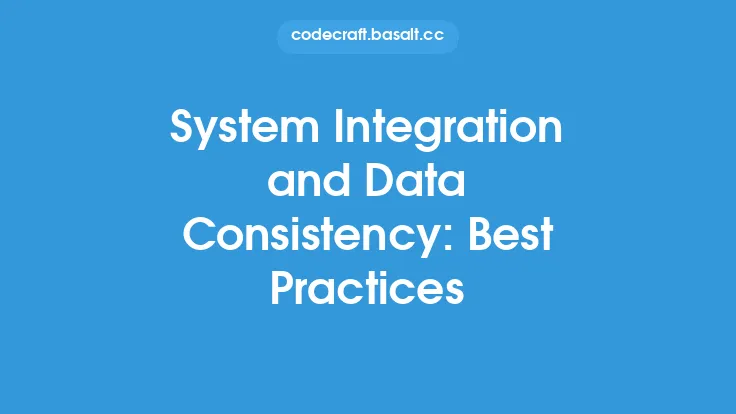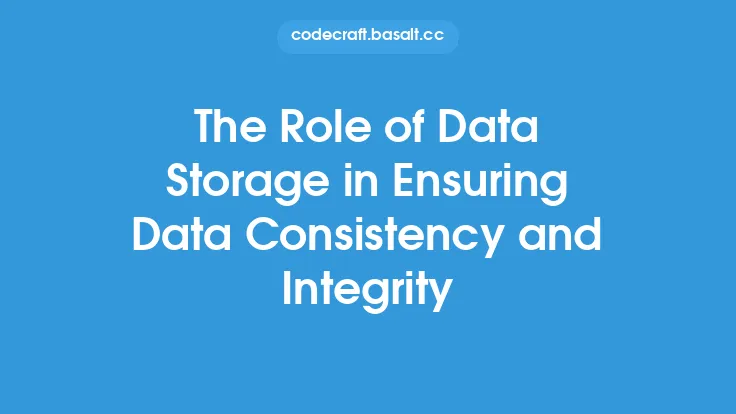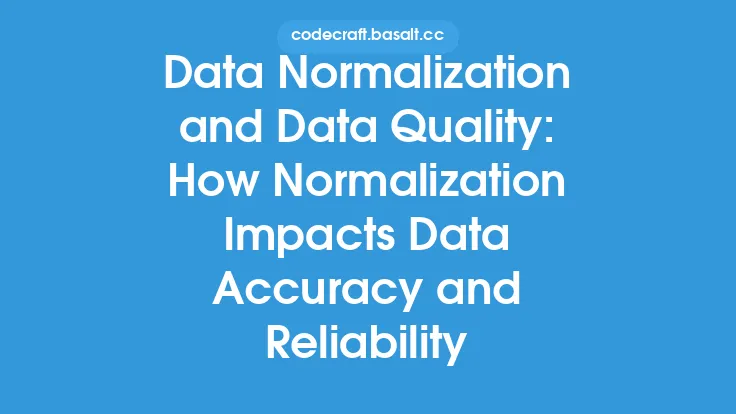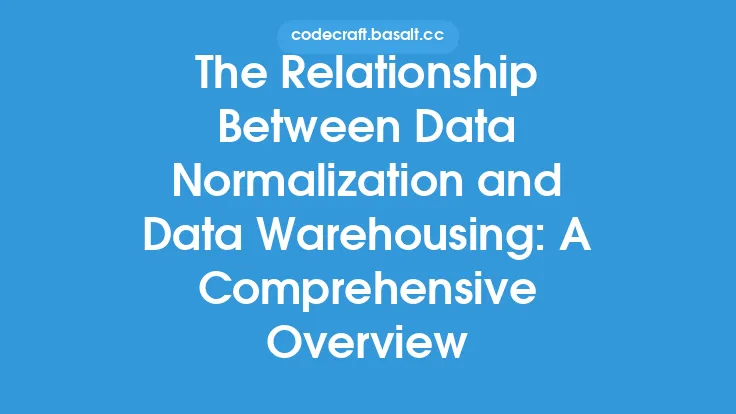Data modeling and data governance are two crucial aspects of database systems that ensure data quality and consistency. Data modeling involves creating a conceptual representation of the data, while data governance refers to the set of policies, procedures, and standards that ensure the data is accurate, complete, and consistent. In this article, we will explore the importance of data modeling and data governance in ensuring data quality and consistency, and provide a detailed overview of the concepts, techniques, and best practices involved.
Introduction to Data Modeling
Data modeling is the process of creating a conceptual representation of the data, which includes the entities, attributes, and relationships between them. It involves identifying the key entities, attributes, and relationships, and creating a model that represents the data in a logical and consistent manner. Data modeling is essential for ensuring data quality and consistency, as it provides a clear understanding of the data and its relationships. There are several types of data models, including entity-relationship models, object-relational models, and dimensional models, each with its own strengths and weaknesses.
Data Governance: A Critical Component of Data Quality
Data governance refers to the set of policies, procedures, and standards that ensure the data is accurate, complete, and consistent. It involves establishing clear rules and guidelines for data creation, storage, and use, and ensuring that the data is properly documented and maintained. Data governance is critical for ensuring data quality, as it provides a framework for ensuring that the data is accurate, complete, and consistent. It also helps to prevent data errors, inconsistencies, and redundancies, and ensures that the data is properly secured and protected.
The Relationship Between Data Modeling and Data Governance
Data modeling and data governance are closely related, as data modeling provides the foundation for data governance. A well-designed data model provides a clear understanding of the data and its relationships, which is essential for establishing effective data governance policies and procedures. Data governance, in turn, ensures that the data is accurate, complete, and consistent, which is critical for ensuring data quality. By combining data modeling and data governance, organizations can ensure that their data is of high quality, and that it is properly managed and maintained.
Data Quality Metrics and Monitoring
Data quality metrics and monitoring are essential for ensuring data quality and consistency. Data quality metrics provide a way to measure the accuracy, completeness, and consistency of the data, while monitoring involves tracking and analyzing the data to identify errors, inconsistencies, and redundancies. There are several data quality metrics, including data accuracy, data completeness, data consistency, and data timeliness, each of which provides a way to measure the quality of the data. By monitoring these metrics, organizations can identify areas for improvement and take corrective action to ensure that the data is of high quality.
Data Validation and Data Cleansing
Data validation and data cleansing are critical components of data quality and consistency. Data validation involves checking the data for errors, inconsistencies, and redundancies, while data cleansing involves correcting or removing errors, inconsistencies, and redundancies. There are several data validation techniques, including data type checking, range checking, and format checking, each of which provides a way to check the data for errors and inconsistencies. Data cleansing involves using data validation techniques to identify and correct errors, inconsistencies, and redundancies, and ensuring that the data is accurate, complete, and consistent.
Data Standardization and Data Normalization
Data standardization and data normalization are essential for ensuring data quality and consistency. Data standardization involves establishing clear standards for data creation, storage, and use, while data normalization involves transforming the data into a standard format. There are several data standardization techniques, including data formatting, data coding, and data classification, each of which provides a way to standardize the data. Data normalization involves using data standardization techniques to transform the data into a standard format, which helps to prevent data errors, inconsistencies, and redundancies.
Data Security and Data Privacy
Data security and data privacy are critical components of data governance. Data security involves protecting the data from unauthorized access, use, or disclosure, while data privacy involves protecting the data from unauthorized collection, use, or disclosure. There are several data security techniques, including data encryption, data access control, and data backup and recovery, each of which provides a way to protect the data. Data privacy involves establishing clear policies and procedures for data collection, use, and disclosure, and ensuring that the data is properly protected and secured.
Best Practices for Data Modeling and Data Governance
There are several best practices for data modeling and data governance, including establishing clear data governance policies and procedures, creating a well-designed data model, and ensuring that the data is accurate, complete, and consistent. Organizations should also establish clear data quality metrics and monitoring procedures, and use data validation and data cleansing techniques to ensure that the data is of high quality. Additionally, organizations should establish clear data standardization and data normalization procedures, and ensure that the data is properly secured and protected.
Conclusion
In conclusion, data modeling and data governance are critical components of database systems that ensure data quality and consistency. By combining data modeling and data governance, organizations can ensure that their data is of high quality, and that it is properly managed and maintained. Organizations should establish clear data governance policies and procedures, create a well-designed data model, and ensure that the data is accurate, complete, and consistent. By following best practices for data modeling and data governance, organizations can ensure that their data is of high quality, and that it is properly secured and protected.
